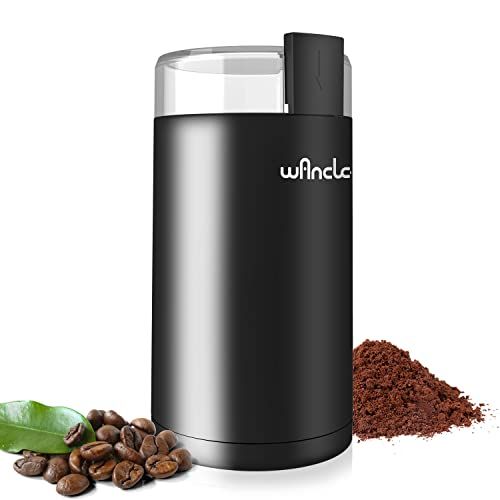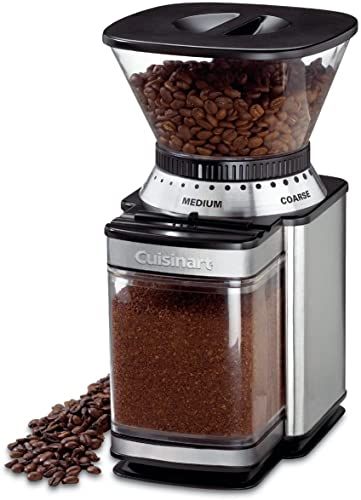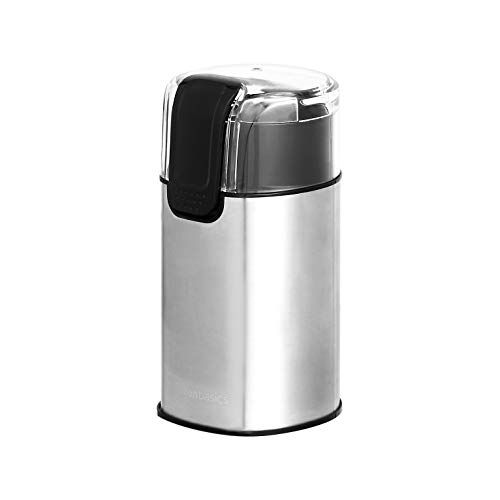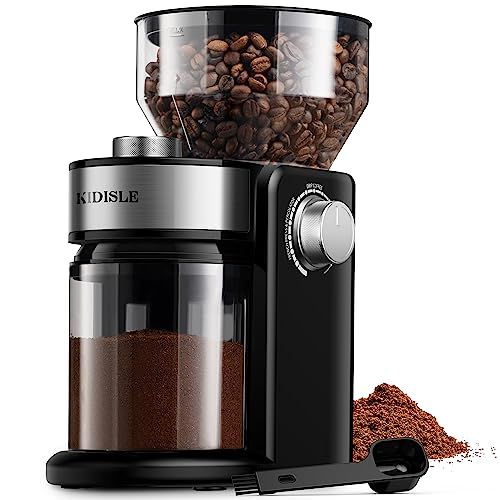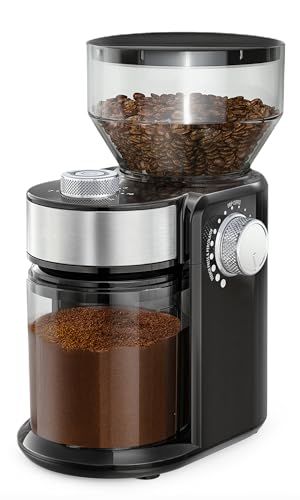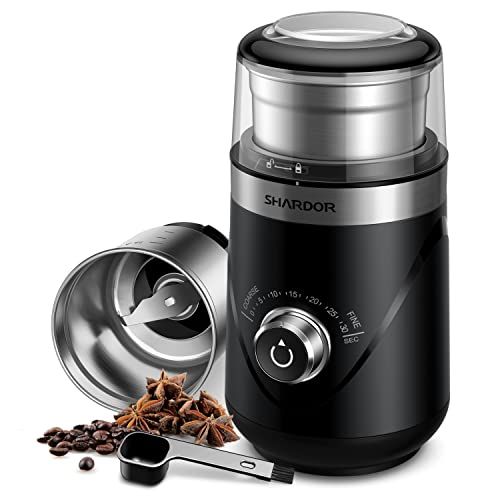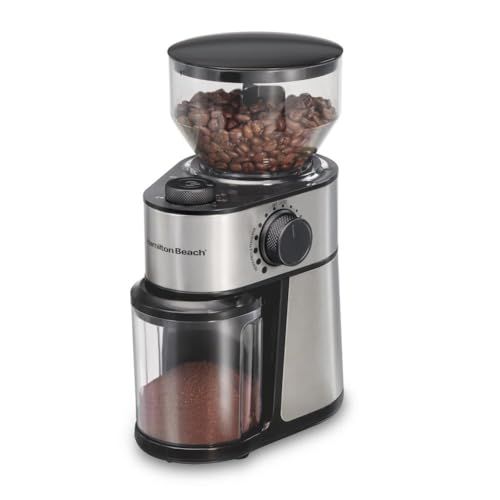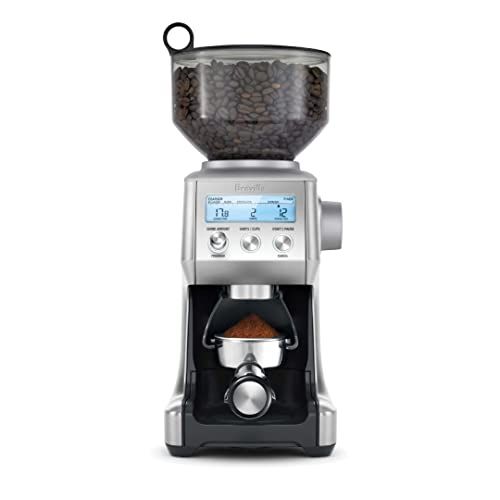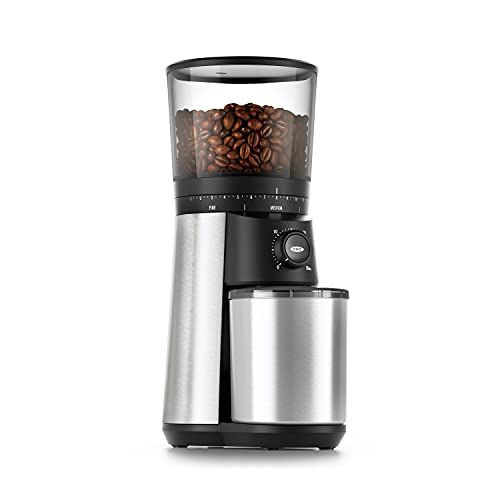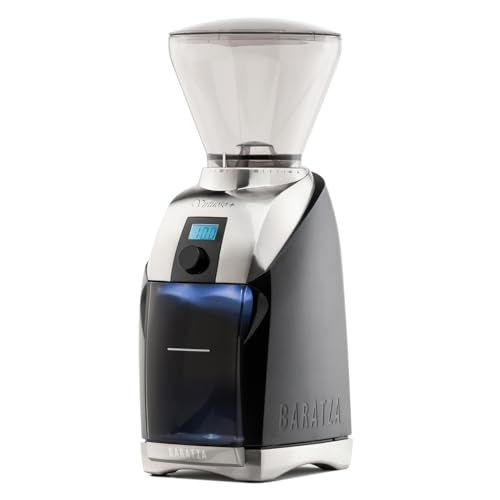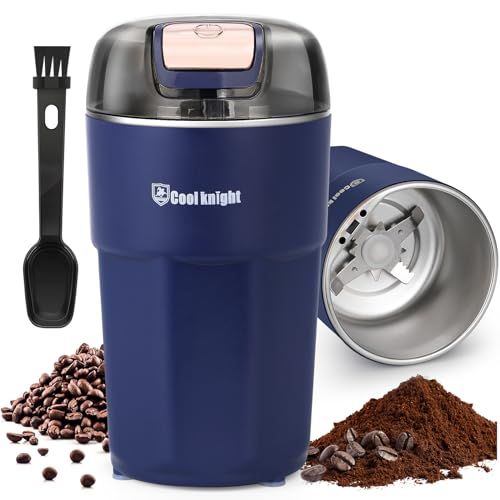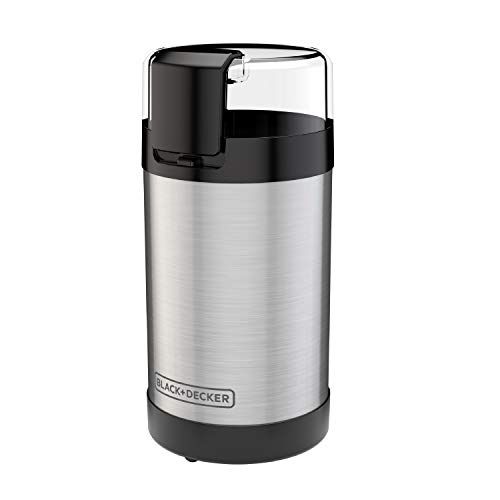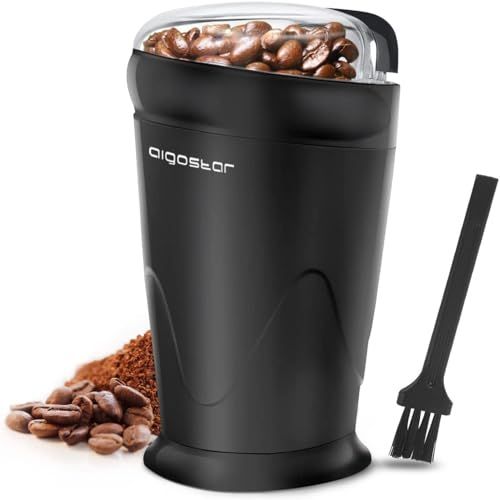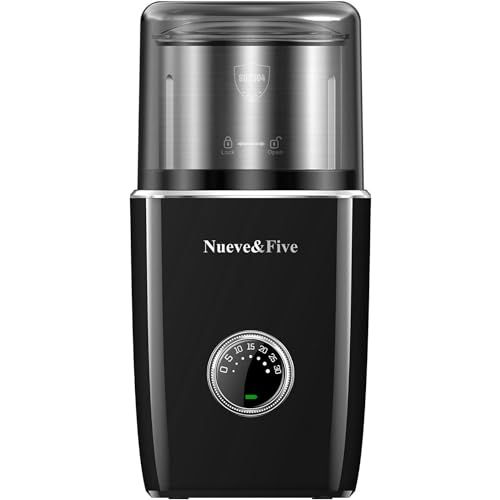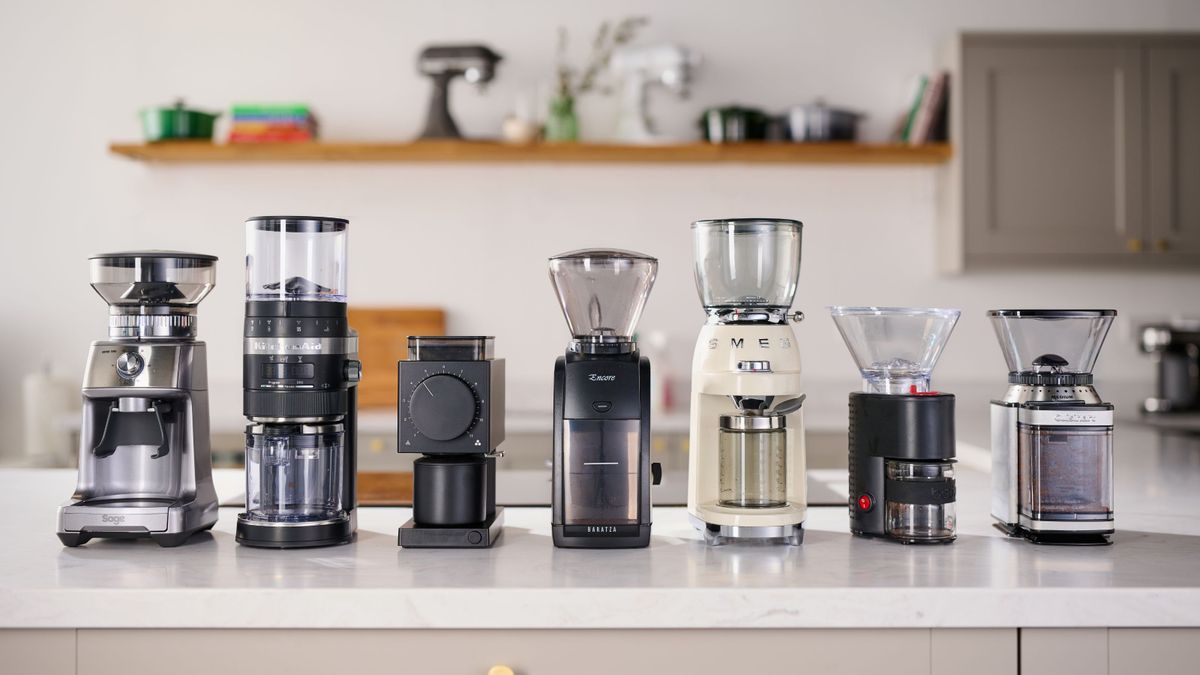
A coffee grinder is an essential tool for any coffee enthusiast. It is used to grind whole coffee beans into a fine powder right before brewing. Freshly ground coffee produces a more intense, flavorsome brew compared to pre-ground coffee.
The purpose of grinding beans is to maximize the surface area of the grounds, allowing for efficient extraction when brewing. The larger the surface area, the more easily the hot water can draw out the oils and soluble compounds that give coffee its unique aroma and taste. Pre-ground coffee has a smaller surface area as it loses its aroma and flavor over time after grinding.
Grinding beans also allows you to customize the size of the grounds based on your preferred brew method. Fine grounds are used for espresso, medium grounds for drip coffee, and coarse grounds for French press. The grind size affects the body, clarity, and extraction of the final brew. Overall, a coffee grinder gives you freshly ground beans with the ideal texture for making delicious coffee.
Types of Grinders
There are several main types of coffee grinders to choose from:
Blade Grinders
Blade grinders use rotating blades to chop and grind the coffee beans. They are inexpensive and simple to operate, just press a button and the blades spin rapidly to grind the beans. However, blade grinders produce an inconsistent grind with a mix of fine powder and large chunks. This can lead to overextraction and underextraction.
Burr Grinders
Burr grinders use two abrasive surfaces called burrs to crush the beans. The burrs are set a fixed distance apart to produce a uniform grind size. Burr grinders allow for grind size adjustability and produce a more consistent grind. There are two types of burr grinders:
Flat burr grinders have two flat disk-shaped burrs. One burr spins to grind the beans against the other stationary burr.
Conical burr grinders have a cone-shaped burr that fits inside a ring-shaped burr. The outer burr spins to grind the beans between the burrs.
Burr grinders cost more but give a superior grind.
Manual Grinders
Manual grinders require hand cranking to grind the beans. They offer portability and let you control the grind, but require physical effort.
Electric Grinders
Electric grinders use a motor to spin the grinding mechanism. They are faster and easier to use but require a power source. Most burr coffee grinders are electric.
Grinder Features
When selecting a coffee grinder, you'll want to consider some key features. This will ensure you choose the right grinder for your needs.
Grind Size Settings
Look for grinders that offer a range of grind size settings. The more settings available, the more control you'll have over the grind. Ideal grinders have at least 10-15 or more settings.
Capacity
Pay attention to the bean hopper capacity and ground coffee bin capacity. Bean hoppers range from 4oz on small models up to 1lb or more on larger grinders. Ground coffee bins are often around 4-8oz. Choose sizes suitable for your daily grinding needs.
Speed
Faster grind speeds produce grounds more efficiently. Blade grinders are very fast while burr grinders are slower. However, burr grinders are preferred for their grinding precision. Good burr grinders have grinding speeds around 1-2 grams/second.
Noise Level
Electric grinders can be noisy, especially blade grinders. Burr grinders tend to operate more quietly. Look for grinders with noise levels of around 60-80 decibels for comfortable use.
Size/Weight
Consider the grinder's dimensions and weight. Smaller/lighter models take up less space and are easy to store while larger models have higher capacities but are bulkier. Most range from around 5-15 inches tall and weigh 5-10 pounds.
Grinding Mechanisms
There are two main mechanisms used in coffee grinders to actually grind the beans - blades and burrs.
Blades
Blade grinders use a high-speed spinning blade to chop and grind the coffee beans. The blades are usually made of stainless steel and spin very fast, up to 20,000 RPM, to grind the beans through impact and cutting.
Blade grinders tend to produce an inconsistent grind with a wide mix of particle sizes. They also create a lot of heat from friction that can burn the coffee. However, blade grinders are typically very affordable and simple to use.
Burrs
Burr grinders use two abrasive surfaces called burrs to grind the coffee beans through crushing and shearing. The two burrs are positioned close together with one stationary and one rotating to grind the beans between them.
There are two main types of burrs used:
Flat burrs - Made of an abrasive material like steel with grooves cut into a flat surface. Produce an even, consistent grind.
Conical burrs - Made from materials like ceramic or stainless steel and shaped like cones or triangles that fit inside each other. Can produce a variety of grinds.
The material and exact shape of the burrs impacts the flavor and uniformity of the grind. Burrs also produce less heat than blade grinders. Burr grinders are considered superior for grind consistency and flavor but tend to be more expensive.
Grind Consistency
A consistent grind is essential for making great tasting coffee. The uniformity and distribution of grind sizes impacts extraction, flavor, and body.
Ideally, the grounds should be evenly sized with minimal fines (super fine powder) or boulders (large chunks). Fines over-extract and contribute bitterness while boulders under-extract and weaken the brew. An inconsistent grind with too many fines and boulders results in unbalanced flavor.
A burr grinder crushes beans between two revolving abrasive surfaces to produce a more uniform grind. In contrast, a blade grinder chops inconsistently. Burrs provide superior grinding precision for consistent particle distribution. Conical burrs excel at single dose grinding while flat burrs are ideal for high volume batch grinding.
The grind settings on quality burr grinders allow incremental adjustment from fine espresso to coarse French press. Tightening the grind setting produces smaller, more uniform particles. High end grinders with steel burrs and precision machining achieve remarkably consistent grinds for optimal extraction and taste.
Grind Size
The grind size you use depends on the brew method. Each method requires a different grind size to optimize flavor extraction.
Espresso
The finest grind size. The tiny grind particles allow for proper extraction under pressure in an espresso machine. A fine espresso grind exposes more surface area to the hot water for full flavor extraction.
Pour Over
A medium-fine grind. The slightly larger grind particles slow down the rate of water passing through the grinds to extract the full coffee flavor. Not as fine as espresso.
Cold Brew
A coarse grind. The large grind allows for long, cold water contact time. Using a fine grind for cold brew would result in overextraction and bitterness.
French Press
A coarse grind. The plunger mechanism of a french press requires a coarse grind to allow for grit-free coffee. Too fine a grind would result in sediment at the bottom of the press.
Manual vs Electric Grinders
When choosing a coffee grinder, one of the main decisions is whether to get a manual or electric model. There are some key differences between these two types of grinders:
Convenience
Electric grinders are much more convenient to use. You simply press a button and the grinder does all the work for you. Manual grinders require you to put in physical effort to grind the beans by cranking a handle. This can be time-consuming and tiring if you need to grind a lot of coffee. Electric grinders are great for people who want to grind coffee beans quickly with minimal effort.
Control
Manual grinders give you more control over the grind size. You can adjust the grind from fine to coarse by how fast you turn the crank. With electric grinders, you set the grind size by adjusting a dial or button. However, manual control allows you to feel the beans as you grind them and make micro adjustments as needed. This level of control is preferred by coffee enthusiasts looking to perfect the grind for their brew method.
Noise
Electric grinders are often much louder than manual models. The electric motor creates a whirring noise that can be disruptive, especially early in the morning. Manual grinders operate quietly with just the sound of the beans being crushed. If you need to grind coffee without disturbing others, a manual grinder is ideal.
Speed
Electric grinders are vastly faster than grinding manually. An electric grinder can produce grounds for 10+ cups of coffee in under a minute. A manual grinder would take several minutes to produce the same amount. Electric grinders save a lot of time for people who make a lot of coffee daily. However, manual grinders may provide a more mindful, meditative grinding experience.
So in summary, electric grinders provide speed and convenience, while manual grinders offer more control and quiet operation. Consider your needs and preferences when deciding between these two grinder types. Both can produce high quality, fresh grounds to help you brew great tasting coffee.
Blade vs Burr Grinders
When choosing between blade and burr grinders, there are a few key differences to consider:
Grind Consistency
Burr grinders generally produce a much more consistent grind size than blade grinders. The burrs crush the beans to a uniform size determined by the burr setting. Blade grinders chop and smash the beans randomly, leading to an inconsistent mix of fine powder and large chunks.
The consistency of grind size is important for brewing coffee. An even grind allows water to extract flavor from the coffee grounds evenly. Uneven grinds lead to poor extraction and over-extraction in parts of the brew.
Grind Size Range
Burr grinders allow you to adjust the grind size with precision, often with stepless or many stepped settings. This lets you fine-tune the grind for any brew method - from Turkish fine for espresso to coarse for French press.
Blade grinders produce a narrow range of grind sizes in one grind. You have little control over the size, aside from grinding longer or shorter. The random chopping motion makes it difficult to achieve very fine or very coarse grinds.
Heat Generation
The fast spinning blade in blade grinders generates a lot of heat from friction. This can burn the coffee grounds, especially oily beans. Burr grinders crush the beans with less friction and produce less heat.
The cooler grinding of burr grinders helps preserve the coffee's flavors and aromas. Overheating grounds leads to a bitter, harsh taste.
So in summary, burr grinders offer superior grind consistency, size range, and less heat than blade grinders. This makes them better suited for brewing optimal coffee across methods. Blade grinders are cheaper but have notable drawbacks for grind quality.
Care and Cleaning
To keep your coffee grinder in good working order, proper cleaning and maintenance is essential. Here are some tips:
Disassembly
Many electric burr grinders allow for disassembly to access the burrs and internal components for cleaning. Refer to the manual for model-specific disassembly instructions. Often there are release buttons or tabs that allow the hopper, burr housing, and other parts to separate. Take care when handling the sharp burrs.
Cleaning Frequency
Clean the grinder thoroughly every few weeks.
Wipe out the bean hopper daily to remove any residue.
Brush out the chute and spout after each use to remove lingering grounds.
If flavor transfer is noticed, clean more frequently.
Maintenance
Inspect burrs regularly and replace if excessively worn.
Lubricate burrs and interior components periodically as specified. Food-grade lubricants are recommended.
Check for worn gaskets, bushings, or bearings and replace as needed.
Tighten any loose screws or fasteners to prevent issues.
Test and calibrate grind settings occasionally to ensure consistency.
Proper care will keep a coffee grinder working optimally for years of daily use. Cleaning regularly prevents buildup and oxidation that can affect flavor. Following the manufacturer's maintenance guidelines extends the life of the grinder.
Recommendations
When choosing a coffee grinder, consider your specific needs and preferences. Here are some top recommendations for different types of coffee grinders:
Best for Espresso
Baratza Sette 270W Conical Burr Grinder - With its powerful DC motor, the Sette produces extremely consistent and fine espresso grinds. The straight-thru grinding design minimizes retention. The digital control panel allows you to adjust grind settings precisely.
Best for Pour Over
OXO Brew Conical Burr Coffee Grinder - This grinder has 15 settings from fine to coarse, ideal for pour over. The built-in timer allows accurate dosing. The grounds container is designed to reduce static build up. Easy to clean and quiet operation.
Best Manual Grinder
JavaPresse Manual Coffee Grinder - For a quality manual grinder, the JavaPresse offers a durable brushed stainless steel design. The ceramic combo burrs provide a consistent grind. Simple to adjust coarseness and easy to clean. Portable for travel.
Best Value
Cuisinart DBM-8 Supreme Grind Automatic Burr Mill - A great entry-level electric burr grinder at an affordable price point. It offers 18 grind settings and a removable grind chamber. The 8-ounce hopper can hold enough beans for 32 cups. Includes a cleaning brush.
Coffee grinders comparison
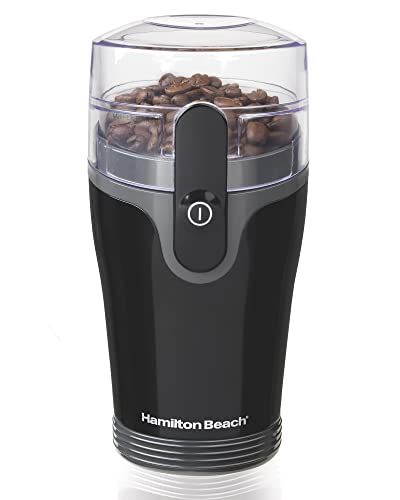 | 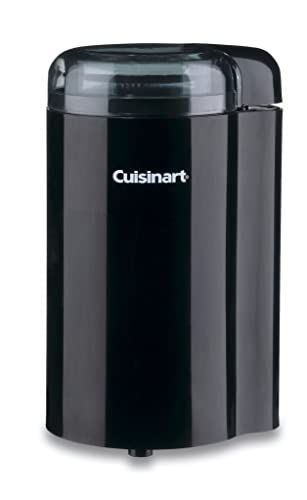 | 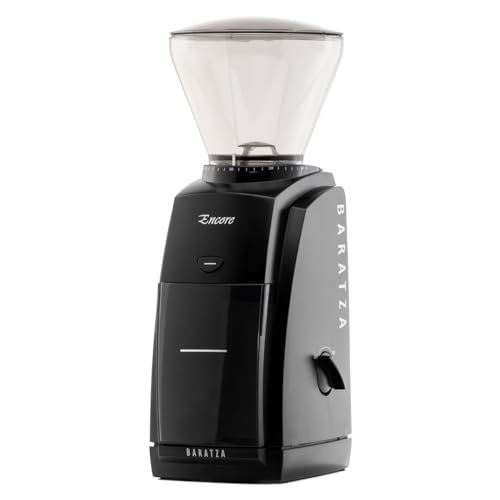 | 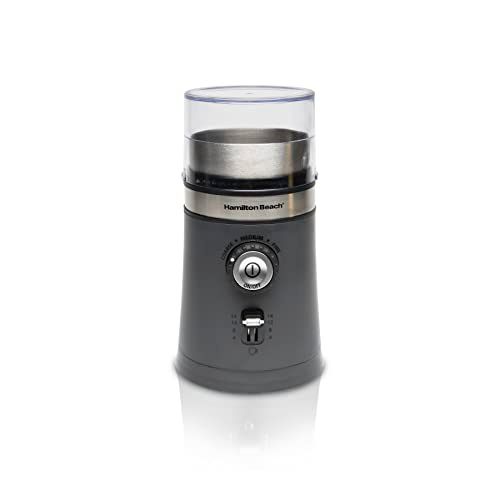 |  | |
|---|---|---|---|---|---|
| Model | Hamilton Beach 80335R | Cuisinart DCG-20BKN | Baratza ENCORE | Hamilton Beach 80396C | Aromaster CG204 |
| Brand | Hamilton Beach | Cuisinart | Baratza | - | Aromaster |
| Coffee Maker Type | - | - | - | - | French Press |
| Color | Black | Black | Black | - | Grey |
| Country of Origin | China | China | USA | Switzerland | - |
| Filter Type | - | - | - | - | Reusable |
| Human Interface Input | - | - | - | - | Buttons |
| Item Model Number | 80335R | DCG-20BKN | ENCORE | 80396C | CG204 |
| Manufacturer | Hamilton Beach | Cuisinart | Baratza | Hamilton Beach | Aromaster |
| Model Name | - | - | - | - | CG204 |
| Special Feature | - | - | - | - | Timer, Integrated Coffee Grinder |
| Specific Uses for Product | Grind Coffee, Spices, Beans and More | Coffee Grinder | Coffee Grinder | - | - |
| Style | Standard | Modern,Safety | Automatic | - | - |
| Voltage | 110 | - | 220 | - | - |
| Recommended Uses for Product | Grind Coffee, Beans, Spices and More | Home | Grinding | - | - |
FAQ
What is a coffee grinder?
A coffee grinder is an appliance used to grind coffee beans into a fine powder. The ground coffee is then used to brew coffee. Coffee grinders can be manual or electric.
Why should I grind my own coffee beans?
Grinding coffee beans right before brewing allows you to get the freshest cup of coffee. Whole coffee beans start to lose flavor soon after being roasted. Grinding them preserves the flavor and aroma.
What are the different types of coffee grinders?
The main types are blade grinders, which use a spinning blade, and burr grinders, which use two abrasive surfaces to grind the beans. Burr grinders produce a more uniform grind. Common burr grinder types are conical and flat.
What features should I look for in a coffee grinder?
Look for grinders with adjustable grind size, a timer, and a hopper to hold the beans. For electric grinders, a powerful motor and grind speed control are also useful features.
How do I use a manual coffee grinder?
Place the beans in the grinder's hopper. Turn the handle to rotate the burrs or blade to grind the beans. Grind to the desired consistency, from fine espresso to coarse French press. Add beans as needed during grinding.
How do I use an electric coffee grinder?
Add beans to the hopper and select your grind setting. Press start for the grinder to automatically grind the beans. Some models have a timer to preset the grinding time. Let the grinder run until empty before adding more beans.
How do I clean a coffee grinder?
Remove all beans and ground coffee. Wipe the hopper and burrs/blade with a dry brush. For electric grinders, you can use grinder cleaning tablets to remove oils. Manual grinders can be taken apart for deeper cleaning.
How fine should I grind for espresso?
Espresso requires an extremely fine, powder-like grind to extract properly. Look for a grinder with Italian-style burrs engineered for fine grinding.
How coarse should I grind for French press?
Use a coarse grind so the coffee grounds don't pass through the French press filter. The exact grind size can vary based on your preferences.
How can I get a consistent grind size?
Burr grinders, especially steel burrs, produce the most uniform grinds. Conical burrs are ideal for espresso. Flat burrs excel at coarse grinds for French press. Blade grinders tend to produce inconsistent grinds.

